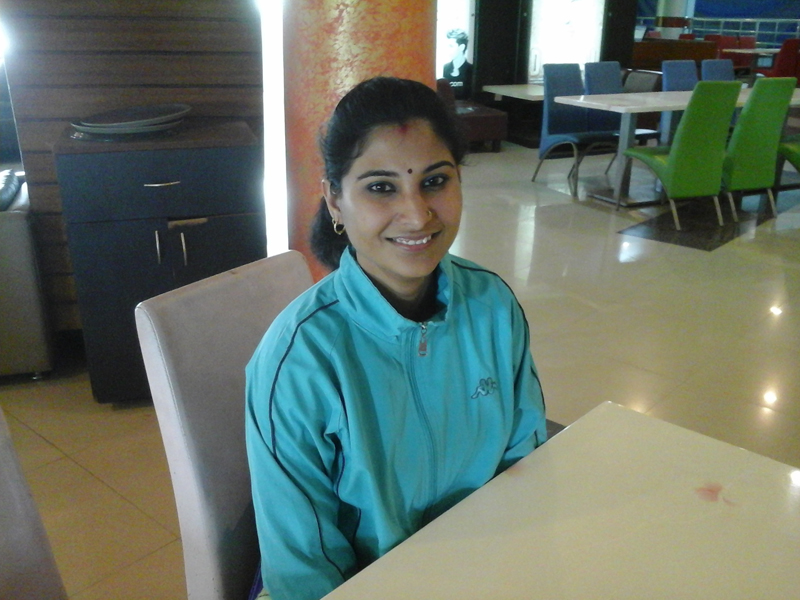
OR

Physiotherapy has gained significant popularity among the masses here in Nepal. Over the years, we can see that patients have developed a lot of confidence in the effectiveness of the treatment. Dr Prarthana Lohani Pant, at Medicare National Hospital and Research Center, points out the exercises recommended in physiotherapy aren’t only useful for relieving aches and pains but also preventing them. Here Dr Pant shares some views and useful tips.
Are there any common issues that you treat on a regular basis?
We get a wide variety of problems and patients on a daily basis. For example, just recently I had a three-year-old come in with neck cramps. Apparently, she played with her parent’s tablets a lot. So it isn’t just older people with arthritis or back aches as many people tend to believe. As our day-to-day life has become more sedentary and as our daily diet has become less healthy, we see more people of all ages come in with various issues.
So what would you suggest they do?
It’s all about being more conscious. We have so many housewives come in complaining of aches and pains and we often find out that they aren’t paying attention to how they perform their daily chores. For instances, sitting at a table rather than crouching down on the floor while cutting or peeling vegetables can save the agony of back problems. It’s the day-to-day activities that affect our posture and lead to aches and pains. Same goes for office workers.
We have even traced small day-to-day habits like putting your wallet in the back pocket of your pants or wearing incredibly tight belts to lower back aches and such. So we must be more conscious of our actions.
Is it safe to carry out physiotherapy exercises on your own?
If you have trouble areas and are experiencing discomfort, then I recommend people seek professional help. For example, we have had Baba Ramdev enthusiasts as patients because they weren’t performing the steps correctly. So, guidance is important.
In other cases, where you are just trying to maintain a healthy body, there are some simple steps that anyone can try. You can even perform them up to three times a day if possible. However, don’t increase the count as you go. Remember these steps aren’t for increasing your stamina but all about maintaining a flexible body.
Basic exercises
Ankle pumps
This simple action improves blood circulation all the way from the head to the foot. The move requires one to lie down and move their toes and heels up and down. The goal can also be achieved while standing. Just lift your toes for 10 seconds and then switch by lifting your heels for 10 seconds.
Straight leg raise
All one has to do is raise each leg one at a time and hold it for 10 seconds. After completing 10 sets for each leg, you can also turn around, lie on your stomach and repeat the same process. This helps avoid back problems.
Sitting quadriceps
Here you have to sit on a chair, raise both legs and hold for ten seconds. This move is popularly used to help strengthen knee joints.
Perpendicularly balanced
The first exercise involves sitting down and holding out both arms sideways at the same time at shoulder level (90 degrees). This position must be held for 10 seconds and should be repeated 10 times.
Similarly, another exercise requires one to place both their hands behind their head and attempt to bring their elbows together. These moves have an effect on three levels: neck, thoracic and scapula.
Neck strong
In order to prevent neck cramps, one can follow four steps. They all include giving pressure to the region but in an indirect way. To begin with, place your palm on your forehead. The trick is to counter balance the applied pressure so while your palm is trying to push back your forehead, use your head to push the palm front. Continue for 10 seconds. After that you can repeat the exercise three more times by applying pressure from the back of the head, on the sides of the face and lastly, the chin.
Bridging
This exercise is to protect your lumbar spine or your lower back. Just lie down horizontally (supine position), bend your legs and then lift your back and hips. This activates your pelvic muscle and helps strengthen your lower back.
The namaste
The general greeting can actually have a triple effect on the body. By simply holding your hands together in a namaste position and applying pressure for ten seconds or so, you can help exercise the shoulder, elbows and wrist muscles.
Wrist happy
Since laptops and typing are unavoidable, wrist aches have become quite the common complain. Now many tend to automatically rotate their wrists to save them from this discomfort, but you can also exercise your fingers to tackle this issue. You can either clench and unclench your fingers into a fist or simply hold out your hand and then move your fingers by bringing them together and separating them. Continue the action for at least 10 seconds.
You May Like This

Experts suggest taking effective measures to contain dengue spread
KATHMANDU, July 11: With 1,192 cases of dengue and one fatality from the viral infection recorded in the past four... Read More...

Preventing medical negligence
Many cases of medical negligence are being reported in Nepali media. The recent case that has been making news is... Read More...

Prevention is better
Linking disaster management with the national development framework has always been a big challenge here in Nepal ... Read More...






Just In
- Power supply to be affected in parts of Kathmandu Valley today as NEA expedites repair works
- Godepani welcomes over 31,000 foreign tourists in a year
- Private sector leads hydropower generation over government
- Weather expected to be mainly fair in most parts of the country today
- 120 snow leopards found in Dolpa, survey result reveals
- India funds a school building construction in Darchula
- Exploring opportunities and Challenges of Increasing Online Transactions in Nepal
- Lack of investment-friendly laws raises concerns as Investment Summit approaches












Leave A Comment